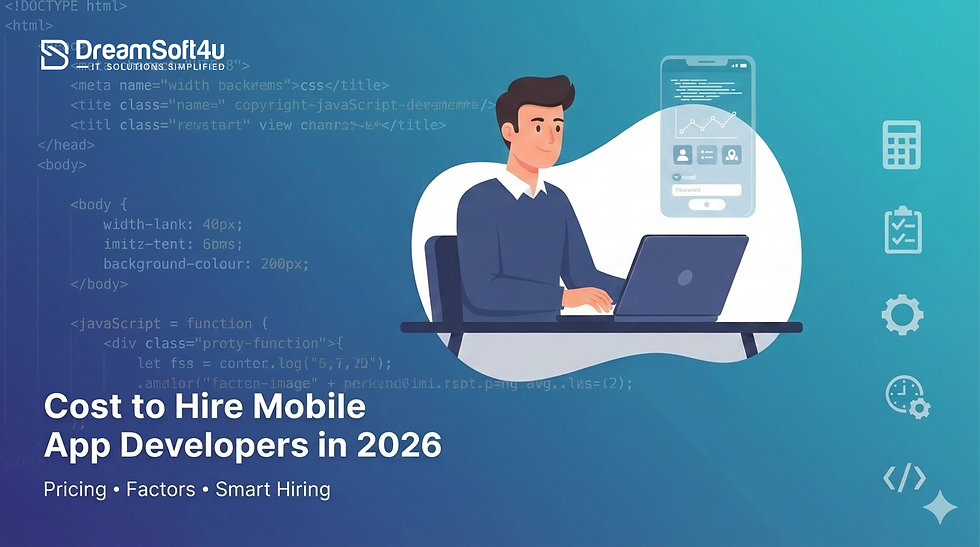The Best Mobile App Development Platforms
- ds4useodigital
- Jul 1, 2024
- 3 min read

Do you need clarification in selecting the best mobile app development platform? When investors start looking for a mobile app development company, they come up with multiple queries for which they need answers. Investors have to do proper research to understand the workflow and how it can leverage their business. After completing market analysis and research, investors come up with a single question: Which is the best platform for their mobile app development?
If you look around, you will find multiple front and back-end platforms with integrated libraries and innovative UI to Integrate features in the app. Additionally, the recent software’s work on a single code base, so it is very easy to program the features in the desired app. So, if you are thinking of choosing the best Mobile app development platform, then you can check out the list given below, which will share all the information about the top front-end platforms for Mobile app development.
What is a Mobile App Development Platform?
A Mobile App Development Platform is a set of tools and services that developers use to create, test, and launch mobile applications. These platforms help the user speed up the process of creating apps. They offer necessary features, including debugging tools that assist in locating and resolving any bugs in the code and code editors that assist developers in writing the app’s code. These platforms also provide emulators and simulators so you may test the app across several devices without requiring physical hardware.
Top 7 Mobile App Development Platform
1. React Native
React Native is one of the most popular frameworks these days as it works on JavaScript, and coders can easily utilize its libraries to develop and implement functions in the application. React Native can build applications for both Android and iOS devices, so it is very resourceful and beneficial for developing cross-platform applications from a single source.
2. Flutter
Flutter is a powerful framework created by Google. In recent times, Flutter has become the most popular platform because it provides multiple resources to developers, and they can create the app in no time. Basically, Flutter works on the Dart programming language to make it more accessible and faster to develop codes and features in the app.
3. Xamarin
Xamarin is one of Microsoft’s best creations. It is great for building apps that can run on Android, iOS, and Windows. Xamarin uses the C# programming language, which is most popular among developers and coders. It’s smart because it lets developers reuse their code across different platforms. It means less work and faster development times.
4. Ionic
Ionic is a free toolkit for building mobile apps using web technologies like HTML, CSS, and JavaScript. Developers choose it to create good-looking apps that work well on different devices. Ionic gives developers a set of pre-built components and designs that help them speed up app creation. Using Ionic is very flexible because it works with other popular frameworks like Angular and React.
5. Android Studio
Android Studio is Google’s official software for building Android apps. Android Studio has a toolbox that has everything developers need to create high-quality apps. Moreover, using the Android Studio editor helps write code and fix any mistakes with helpful suggestions. It includes a virtual emulator to test apps on different types of Android devices.
6. NativeScript
NativeScript lets developers build native mobile apps for both iOS and Android using familiar languages like JavaScript or TypeScript. It means you can use your web development skills to create apps that feel native and work smoothly. NativeScript taps into the full power of native APIs and libraries, giving developers direct access to device features.
7. Apache Cordova
Apache Cordova, also known as PhoneGap, is one of the best platforms for simplifying Android app development services. Using web technologies such as HTML, CSS, and JavaScript. It’s just like putting a web app inside a special container that allows it to access device features like cameras and GPS.








Comments